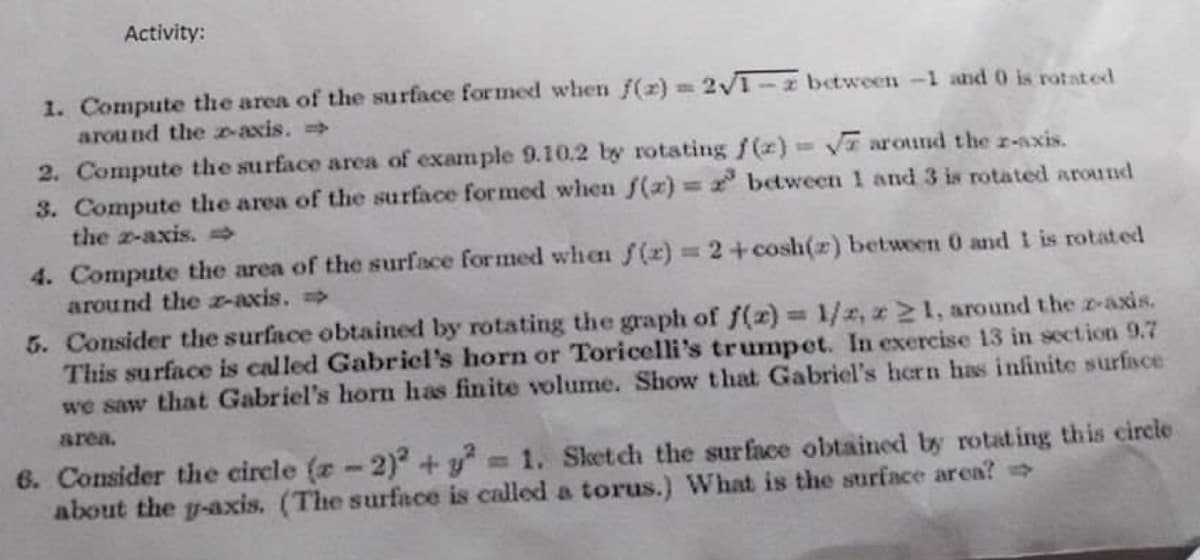Elements Of Modern Algebra
8th Edition
ISBN:9781285463230
Author:Gilbert, Linda, Jimmie
Publisher:Gilbert, Linda, Jimmie
Chapter5: Rings, Integral Domains, And Fields
Section5.4: Ordered Integral Domains
Problem 8E: If x and y are elements of an ordered integral domain D, prove the following inequalities. a....
Related questions
Question

Transcribed Image Text:Activity:
1. Compute the area of the surface formed when f(z) 2V1-z between-1 and 0 is rotated
around the -axis.
2. Compute the surface area of example 9.10.2 by rotating f(z) V around the z-axis.
3. Compute the area of the surface formed when f(x)= between 1 and 3 is rotated around
the z-axis. >
4. Compute the area of the surface formed when f(r) 2+cosh(z) between 0 and 1 is rotated
around the x-axis. >
5. Consider the surface obtained by rotating the graph of f(z) 1/2, z 21, around the z-axis.
This surface is called Gabriel's horn or Toricelli's trumpet. In exercise 13 in section 9.7
we saw that Gabriel's horn has finite volume. Show that Gabricl's hern has infinite surface
%3D
area,
6. Consider the circle (r-2) + y 1. Sket ch the surface obtained by rotat ing this circie
about the g-axis. (The surface is called a torus.) What is the surface area? >
Expert Solution
This question has been solved!
Explore an expertly crafted, step-by-step solution for a thorough understanding of key concepts.
Step by step
Solved in 3 steps with 3 images

Recommended textbooks for you

Elements Of Modern Algebra
Algebra
ISBN:
9781285463230
Author:
Gilbert, Linda, Jimmie
Publisher:
Cengage Learning,

Algebra & Trigonometry with Analytic Geometry
Algebra
ISBN:
9781133382119
Author:
Swokowski
Publisher:
Cengage

Elements Of Modern Algebra
Algebra
ISBN:
9781285463230
Author:
Gilbert, Linda, Jimmie
Publisher:
Cengage Learning,

Algebra & Trigonometry with Analytic Geometry
Algebra
ISBN:
9781133382119
Author:
Swokowski
Publisher:
Cengage